IN THIS ISSUE
- Roadside refuge for rare orchid
- CWD: What you need to know
- Native plants fall migrants favor
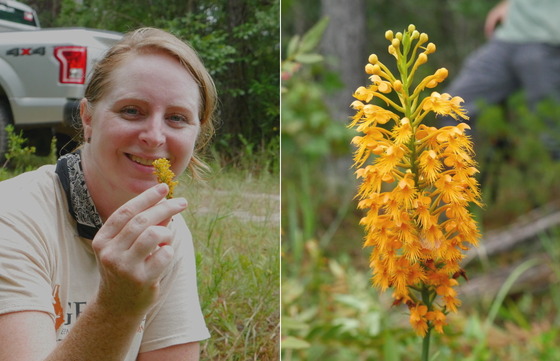 DNR senior wildlife biologist Erin Cork and Chapman's fringed orchid (Ethan Hatchett/DNR)
Orchids are some of the most desired plants in the world. Their unique flowers conjure up images of rainforests and jungles.
But these spectacular plants are sometimes found where you least expect them.
In deep south Georgia, Chapman’s fringed orchid is one of these – a rare wildflower found in a not so rare place.
Explore this orchid and the partnerships helping conserve it in our new blog post.
 White-tailed buck (Terry Froelich/GNPA)
First recognized as a syndrome in captive mule deer in Colorado in 1967, chronic wasting disease has since spread across much of North America. Florida is the most recent state confirmed with the neurological disease fatal to deer, elk and moose.
The discovery this summer in the Panhandle, just across the Alabama line (Bama recorded its first case came in 2022), has turned attention to work by Georgia and other CWD-free states to keep watch and be ready to respond.
CWD RESOURCES
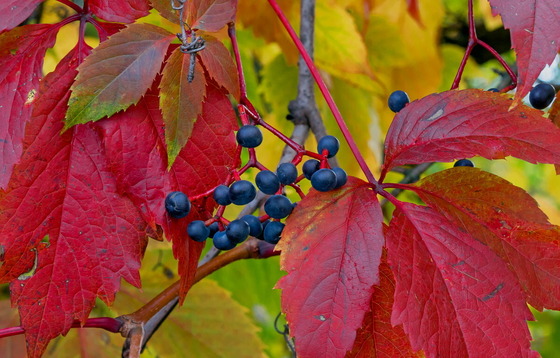 Virginia creeper, a fruitful vine for migrating songbirds
By TERRY W. JOHNSON
Attracting migrating songbirds to your backyard in the fall is always a challenge. However, if you want to host a wide variety of these migrants, offer them a bountiful supply of native fruits and berries.
Weeks ago, birds such as warblers, thrushes, tanagers and flycatchers began preparing for their fall migration by switching from a diet rich in insects to one dominated by berries and fruits. Before they leave on their epic journeys, they will increase their body weight from 50-100 percent.
But they won’t be gobbling up just any berry or fruit they find. Instead, migrants show a definite preference for berries that are highly pigmented (such as blue, blue-black and red) and produced by native plants. And while some non-native plants produce berries that are similarly colored, their berries are often far less nutritional.
Why does this matter to birds? They’re on a tight schedule to bulk up. ...
Read Terry’s column for insights on native plants favored by fall migrants.
Terry W. Johnson is a retired DNR manager and executive director of TERN, friends group of the Wildlife Conservation Section. Check out past columns and his blog. Permission is required to reprint a column.
 Quail Country CCAA meeting (Karl Etters/Tall Timbers)
Georgia and Florida wildlife leaders are celebrating a new conservation tool, one aimed at helping keep 12 at-risk species off the federal Endangered Species list. The Quail Country Candidate Conservation Agreement with Assurances offers private landowners in north Florida and a 28-county swath of south Georgia an option to work with state agencies to conserve and improve habitat for these species, which vary from frosted elfins to Henslow’s sparrows and gopher tortoises. If any are federally listed during the voluntary agreement, enrolled landowners who are following guidance to maintain and enhance habitat for that species will not face increased regulation. DNR, Florida Fish and Wildlife Conservation Commission, Tall Timbers and the U.S. Fish and Wildlife Service signed the agreement – the first involving more than one state – at Tall Timbers near Tallahassee last month. Helen and Tom Roth then signed up, enrolling 100 acres they own along the Apalachicola Bluffs in north Florida.
How sweet it is: Northview High students Swathi Pradeep and Ella Lazar started their Flying Cookie Co. with an eye on conservation and recently donated $400 from sales at the Johns Creek school’s Market Day to DNR. The two entrepreneurs are particularly concerned with birds and the money will be used to support the agency’s annual Youth Birding Competition.
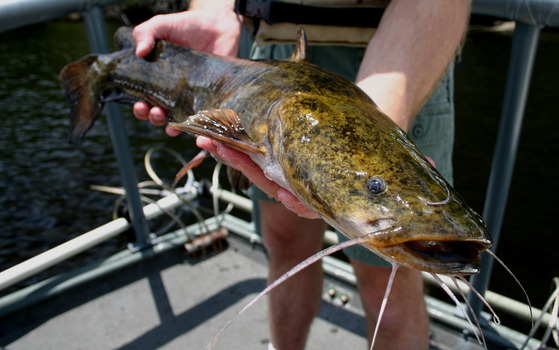 Who's not welcome on the Ogeechee? This cat. (DNR)
Flathead catfish have made their way into the Ogeechee River, where the invasive heavyweight cats pose threats to the river’s redbreast and other native fishes. DNR sampling netted more than a dozen flatheads in August, spurring a call for Ogeechee anglers to harvest and report any flatheads caught to GeorgiaWildlife.com/ans.
Fin clips from over 20 redeye bass sampled by DNR’s Stream Survey Team on Lula Lake Land Trust property near Lookout Mountain will help define the species’ population structure and composition in the Tennessee River drainage. This basin shares its redeye bass with the Coosa River watershed, and uncertainty about the species’ home range plus possible hybridization with smallmouth, largemouth and Alabama bass pose questions that genetics can help answer.
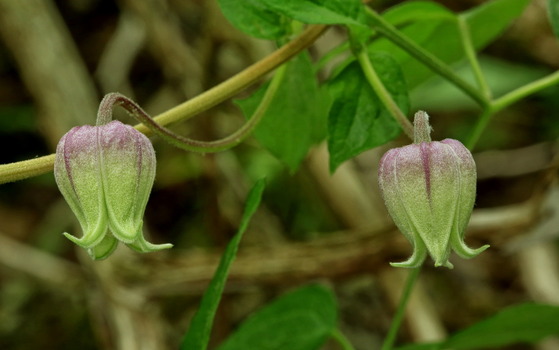 Morefield’s leatherflower (Alan Cressler)
Searches for rare plants to assess the distribution of species uncovered a few gems in northwest Georgia. Two new populations of endangered Morefield’s leatherflower (Clematis morefieldii) were discovered, while DNR botanist Nate Thomas found no fewer than eight occurrences of grooved flax (Linum sulcatum), a prairie communities plant not documented in Georgia for 50 years.
The nation’s first list of regional plant species of greatest conservation need was finished by the Southeastern Plant Conservation Alliance last month. The roll of more than 1,800 plants will help promote long-term conservation goals across the region’s 13 states, noting that an estimated 40 percent of plant species lost since European settlement in North America have been from the Southeast.
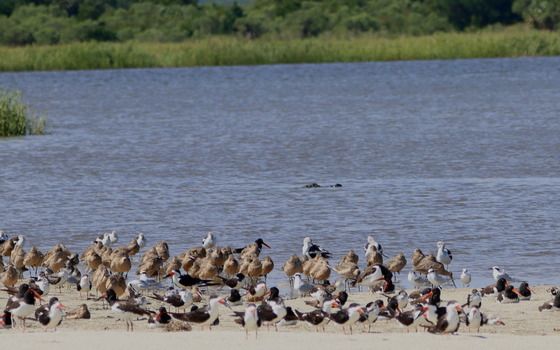 A large alligator lays low off Little Egg Island Bar (Tim Keyes/DNR)
Quick hits:
- While DNR's Tim Keyes checked banded shorebirds on Little Egg Island Bar, can you spot the other visitor (above) that watched from the water?
- With more than two-thirds of Georgia sea turtle nests inventoried this year, hatching success is running about 56 percent, just under the 10-year average and due partly to flooding from late-June high tides and Hurricane Idalia.
- The bald eagle pair live-streamed at Berry College is back and making home improvements for the nesting season.
- Take Flight programs at Georgia state parks are exploring native wildlife that fly, and offering prizes to people who take part in at least four programs.
- The 2024 Youth Birding T-shirt Art Contest is open to pre-K through high-school artists and entering is easy.
- The Georgia Department of Transportation is transferring wetland mitigation lands to DNR, with tracts in Taylor and Lee counties the first to change hands.
- Powered by a National Fish and Wildlife Foundation grant, Georgia Audubon will restore 10 acres of habitat in DeKalb County for birds and other wildlife.
- The eastern indigo has been crowned winner of the U.S. Fish and Wildlife Service’s Hiss Southeast Snake Beauty Pageant.
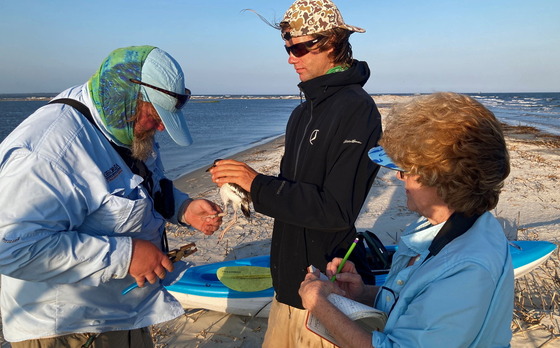 DNR staff and Patricia Deveau band an American oystercatcher (Special from Patricia Deveau/TERN)
Names in the news: The Georgia Prescribed Fire Council honored DNR’s Shan Cammack and Tim Kolnik of the U.S. Forest Service with inaugural Mark Melvin Prescribed Burner of the Year awards at the group’s statewide meeting in Columbus last week. Named for Melvin, a council founder and longtime prescribed fire leader, the new statewide recognition lauded efforts by Cammack, Wildlife Conservation Section fire safety officer, to engage “not only other burners but the general public and youth of the Southeast” as potential “stewards of fire” (see one example). The north Georgia-focused award presented District Fire Management Officer Kolnik marked, in part, his help developing burn modeling that has doubled the acreages burned on the Forest Service’s Oconee District. DNR appointed two new deputy commissioners, Thomas Barnard as deputy commissioner for operations and Trevor Santos as deputy commissioner for governmental and public affairs, communications and grants. Barnard has more than 30 years of experience with DNR’s Law Enforcement Division and served as director since 2018. Santos spent more than a decade in government relations, most recently leading those relations and state affairs for the National Shooting Sports Foundation. Patricia Carter Deveau writes about shadowing DNR staff on a shorebird survey in this blog post about a Weekend for Wildlife auction trip. Carter is a board member with The Environmental Resources Network, the Wildlife Conservation Section's friends group.
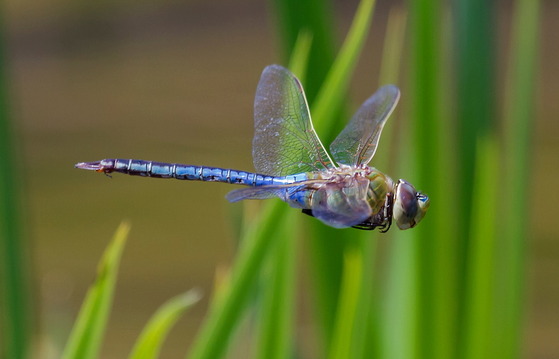 Green darner on the move (Adobe Stock)
In the fall, many of our favorite summer birds migrate south for winter. But they aren’t alone: Dragonflies also make impressive migrations. For green darner dragonflies, it takes generations to complete that journey. The first generation emerges in the southeastern U.S., Mexico and the Caribbean, and flies to New England and the upper Midwest in spring. There, the insects breed, lay eggs and die. Their offspring mature in summer and many then migrate back to their parents’ southern home that fall, where they breed and live out the rest of their lives. Those young hatch, grow and lay eggs, and their offspring restart the cycle the next spring. Each migrating generation flies over 500 miles to places it has never been to.
- Ethan Hatchett
(video) "DNR investigating shooting of two tortoises," WALB-TV (Albany)
"State board reaffirms support for Burmese python rules to protect wildlife," Georgia Recorder
"Biden vetoes efforts to strip protections for northern long-eared bats, lesser prairie chickens," The Wildlife Society
"Endangered right whale protection gets $82 million boost," The Atlanta Journal-Constitution
"DNR: Invasive catfish species captured in Ogeechee," WJCL-TV (Savannah)
"Okefenokee will be nominated for World Heritage designation," Georgia Public Broadcasting
"Georgia awarded $1.3 million for imperiled species," RoughDraft
"Creating the tools to conserve our wildlife," Phys.org (Georgia Institute of Technology research in Journal of the Royal Society)
(+audio) "Drones hold promise as technique for tagging, monitoring whales," Maine Public
"Scientists concerned over uptick of whale deaths off Northeast," ABC News
"In search of safer refuge: Challenges of replicating nature," Undark
"Sharks on golf course made watery grave unlike any other," The New York Times
"Florida has become a zoo ... a literal zoo," Vox
"Researchers call for biodiversity monitoring system," The Wildlife Society
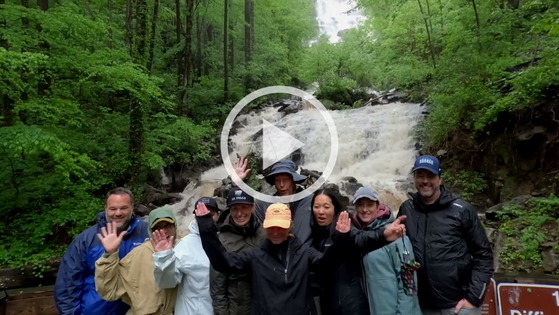 Acres for America: Amicalola-Chattahoochee project, Walmart and National Fish and Wildlife Foundation highlight support for The Conservation Fund's purchase of 2,800 acres adding to Amicalola Falls State Park and Chattahoochee National Forest
(audio) "DNR biologist discusses coyote sightings across metro Atlanta," WABE-FM (Atlanta)
Belted kingfisher dives, spears fish, Missouri Department of Conservation
Great horned owls visit Savannah nest, Landings Bird Cam (via ME Lambright)
Seal salamander feeding on worms, DNR Facebook
"MARTA railcars set sail for ocean in collaboration with DNR," WXIA-TV (Atlanta)
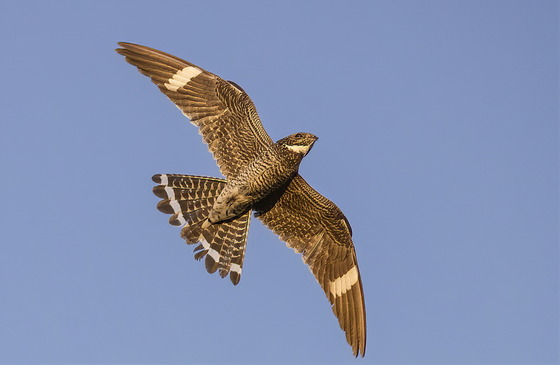 Common nighthawk in flight (Joe Berry)
Joe Berry, a self-taught natural history photographer, found common nighthawks foraging over a Stephens County hayfield one evening last month. Although usually solitary, these graceful and most visible nightjars – their kin include whip-poor-wills and Chuck’s-will-widows – migrate through Georgia in large flocks in late summer and fall. They’re most often seen at dusk and dawn. That’s when they usually feed, catching flying insects in gaping mouths that bely the birds' petite beaks. In the South, nighthawks are often called bullbats. The name comes from the steep dives by males during courtship that create a booming sound as air rips through the primary feathers (listen). Read about Berry’s encounter at Now Habersham.
CREDIT
Masthead: Chapman's fringed orchid in bloom (Alan Cressler)
Top
|